- Home
- V. S. Naipaul
The Masque of Africa Page 13
The Masque of Africa Read online
Page 13
Now began a strange time for her, living alone with the mess of harem life, the rivalries and quarrels, the hatreds, the constant tension. She was protected to some extent by her solitude, her ambition for something beyond the harem, which the others couldn’t even begin to suspect. Within that solitude she discovered a cause: she became determined to spare her daughter what she had gone through.
Her second child was a son. They wanted to take him away. She let them. She covered her face when she nursed the boy. The boy grew up. Thereafter she let the years pass.
The idea that she might do something to save Mona never left her. It gave her a kind of solace, though—living within the walls of the harem, a kind of prisoner—she had no idea what she might do for her daughter. But she felt that because she wished it so much, she would one day be shown a way.
For a year or two a relation of the ruler had been appearing in the harem. He was a doctor from Dubai in the Persian Gulf, a man of mixed Arab and African family. He had become one of the physicians of the ruler. (In the old days the ruler would go to London for his check-up, to Harley Street or the Cromwell hospital; but prices in London were going up and up, and this London jaunt was now too expensive, especially as the ruler was required by his style to travel with an entourage.)
The doctor enchanted the women of the harem with stories of the wonders of Dubai, of grass and gardens being made to grow in the desert, of aeroplanes constantly flying in and out from all points of the globe, of hotels being built next to the ocean.
Laila loved his stories. She liked his clothes. They brought back her old dreams of a world outside. When he discovered that she could read, he brought her English-language newspapers from Dubai and other places. He, for his part, appeared to be more interested in Laila than was correct. People noticed and talked. She was disturbed. She didn’t feel she could at this stage of her life handle more enmity. And if someone in the harem hadn’t said one day, “This doctor is more interested in Mona than in anybody else,” Laila might never have noticed. She studied the doctor when he next came. She saw that he was, indeed, interested in Mona. She wondered that she had missed it. And then she saw the hand of God in the arrival of the stranger from Dubai. She pushed Mona towards the doctor. In time he asked for the girl’s hand.
Perhaps it wasn’t the best arrangement in the world. Laila had no idea what life in Dubai would be like for Mona, but she saw the hand of God in it.
Mona had heard her mother’s stories many times. Laila’s suffering, and the harem life she had known, had hardened Mona, prepared her for whatever might come her way. She was better able to withstand the shock of the doctor’s second wife, and it did come; and the further shock of the third. She never told her mother.
CHAPTER 3
Men Possessed
A LARGE part of the contemporary West African state of Ghana belonged to the kingdom of the Ashanti. The Ashanti kingdom was huge. An old English map shows the area of “Ashanti authority” as about four hundred miles wide and two hundred miles high. On this old map you have to look hard for Accra, the modern capital of Ghana, among the many sea “castles and forts” set down since the fifteenth century—by Portuguese, Danes, Swedes, Prussians from Brandenburg, Dutch and English, all dreaming of gold and slaves—on this long east-west stretch of African coast.
Kojo was an Ashanti, and his wife was the daughter of the previous King of the Ashanti. The king, Kojo said, had asked him to marry his daughter. It is one of the more straightforward things about Kojo. But when he tells it in his own words it acquires a strange tone: “My wife’s father was the previous king. He very tactfully suggested that I marry his daughter. She was studying medicine in school and I was a dentist. She was Ashanti, and I agreed.”
I saw a lot of Kojo when I was in Ghana. At one time we had dinner together every day. He was always ready to answer questions, always helpful and civil. Yet at the end he remained mysterious, almost as mysterious as he had been when he talked in his deadpan way of his marriage to the king’s daughter. At first it seemed to me that in spite of his readiness to talk, there was a reticence about him, an aristocratic African reticence that made him underplay everything. And then I thought that his life had been too varied, full of unconnected or disparate parts, and he hadn’t worked out a way to present himself. I suppose that meant he hadn’t been able to make a whole of his experience.
Here are pieces of the jigsaw as they came to me. Kojo’s father went to Achimota, the famous secondary school set up by the British to train the children of chiefs and local dignitaries for “public duty” (Kojo’s words). The Achimota student became a schoolmaster and served in different parts of Ghana. The schoolmaster’s father (Kojo’s grandfather) was a palace chief, a senior adviser to the king on cultural matters. Kojo said he received a “special” African education.
Kojo (in his reticent style) did not say what this African education was. He only said, “It taught him to fulfil his inherited designation. He was not a top chief or a very powerful one. His fiefdom was limited. He had less land. Land here means status and power. He did not have that kind of power although he was a wealthy man. He was wealthy because he had cocoa farms outside Kumasi. His tenants grew the crops, harvested them and dried them, and then bagged them in sisal bags and sold them to the agency. He had to spend time in Kumasi because of his court duties.”
Kojo said, “My clan produces the kings of Ashanti. There are five other prominent chiefs who can also produce chiefs. But we, of the Oyoko clan, give the leadership on my maternal side.”
The famous Ashanti wars that gave Gold Coast and then Ghana its final shape took place in the 1880s. This would have provided Kojo’s grandfather with enough drama. But the big disturbance in Kojo’s life came with independence and especially with the dictatorship of Nkrumah, the first president of independent Ghana. Nkrumah wished to redraw the Ashanti borders. He wished to make the Ashanti people less dominant. He brought in mining acts that took away the mining rights of the Ashanti. The Ashanti lands were famous for the gold they produced; in colonial times Ghana was known as the Gold Coast. Nkrumah’s mining acts decreed that below a certain depth in the ground all the mines belonged to the government.
Kojo said: “I could see myself in trouble. I was used to living in a country where there was the rule of law and where there were human rights and everything was regulated.”
From this period come his London stories, where his addresses are in Belgravia; this is when his three sons (“three of my boys”) go to Eton.
I met one of the boys at the very end of my time in Ghana, the evening of my last day, at the airport. He was charming and resourceful, full of manners, a great help in the airport mess and crowd; and I felt that it might be possible for this boy (though lacking his father’s experience) to have a steady way of looking and acting that his father (whose memories went back too far) wouldn’t begin to have.
Kojo was brought up as a Christian. In this part of West Africa this usually means a background, or indeed a foreground, of traditional African belief. But Kojo said this was not so in his case. He loved the “Ashanti spirit,” but Christianity had made it mellower and less warlike. Paganism did not pervade Ashanti; Kojo was not exposed to it. The Ashanti have ancestral gods, but they are figures of healing. Certain cultural rites have to be performed at times of death, birth and puberty. Every family has an elder who can do the rites; the knowledge is passed from generation to generation.
2
THIS ASHANTI religion, if what Kojo said was true, was not too intrusive. The same couldn’t be said of the religion of the coastal Gaa people, at one time enemies of the Ashanti. This religion is so encompassing, so full of signs and portents that the true believer (rather like the devout ancient Roman) might live in a constant fever of anxiety about the messages of the gods. This Gaa religion is rooted in the spirits of the departed and is at the same time so much part and parcel of the living world that it surrounds us, this world of prophecy and divine messages,
even when we are not aware of it.
If we are walking on a road and we stub our toe on a stone, that has meaning. If we sneeze, that has meaning. To sneeze on the right side is good; to sneeze on the left is bad. Nature itself has been programmed; we have to learn to read it. Even the velocity of the wind is a sign. The high priest will interpret it; so will the elders who guard the properties of the stool, which stands for the ruler, and women seers.
It was Pa-boh who took me into this understanding of his complex faith, where so much has to be explained. He never spelt his name out for me or wrote it down; so I write it according to my phonetic memory. It may be that I have written it wrongly.
The son of an important chief took me to see Pa-boh. I thought that the house we were going to was Pa-boh’s house. The house, when we came to it, was in a populous but uncluttered part of Accra, without garbage. I was told later that the garbage here, as elsewhere in Accra, was collected by a private garbage-collecting firm. There was also a system of drainage, and that made all the difference to the appearance of the place.
The houses were small but not hemmed in by garbage or fences; so there seemed to be a lot of openness. Children ran in and out of every free space and the street sounded like a schoolyard at recess.
At one end of the street there was a small white concrete structure, like a sentry-box; at the top of this strange box two crosses leaned away from each other. I thought it might have been a very small local chapel, with the leaning crosses showing how the imported religion of Christianity had been made to fit into the older African framework. I learned later that the sentry-box was, in fact, the oracle house, important to local belief, and open only to the religiously qualified.
We walked a little way down from the oracle house, past a few parked cars. We turned into a narrow passageway between two proper houses. The floor here was of concrete, broken in places. We were joined here by Pa-boh. He was wearing a local shirt-jacket, with a wide flare. I didn’t know who he was at this stage. I noticed the stylishness of his dress, and I thought he might only have been an idler, one of those who stare and push themselves forward when strangers come to their place.
At the end of the passageway between the two houses we came upon a little area of openness which enabled us to turn and start on a narrow staircase to the upper floor. So space was cramped again. The narrow staircase was made of roughly sawn timber, not planed or painted, showing diagonal saw-marks. The woodwork upstairs had a similar rough-and-ready quality. Our party edged its way into a small room that overlooked the street. The cries and shouts of the playing children came up to us.
The left side of the room was dominated by a big man who was sitting at a Hewlett-Packard laptop, completely given over to what he was doing. He was of polished appearance, and was sitting, big and chief-like, dressed in white, on a brown-and-white goatskin that was thrown over his chair and came down to the floor. He was told by the chief’s son, who had come with us, who we were. He was civil, but no more, not interested enough in us to look away for long from his laptop; and I was puzzled, since at this stage I thought he was the man we had come to see.
We sat down on the cream-coloured leather chairs set against the outer wall. The street was just outside and below, and the children’s cries came up sharp through the open window at our back.
Pa-boh began to talk.
He stood beside a high stool, and sometimes he sat on the stool. His shirt-jacket, flaring out from the waist, was in a varied but mainly striped black-and-white pattern. He faced the big man in white working at the laptop, but he, Pa-boh, was talking to us, and the big man continued to look at the screen of his laptop, adding a few words from time to time to those he had written.
It was not easy for me in the beginning to concentrate on what he was saying. It was too simple, about God and the spirits; I had heard it before. But then he became more personal and direct. I understood at the same time that the man in white had offered his room as a meeting-place, and had done so as a courtesy, both to me and to the chief’s son, and that Pa-boh was the man we had come to see.
I had to look afresh at Pa-boh. I began to be held. There was a shininess to his face which made him hypnotic whenever, to confirm a point, he smiled and pressed his chin down. He was then like an academic lecturer.
One of the early things he had said was that by the time he was twenty-six he had mastered six jobs or disciplines. At the moment he was administrator-secretary to seven chiefs.
The chief’s son had told me the day before that whenever we went to see important people about religious matters it was common courtesy to offer them a bottle of schnapps. No beer, no whisky, no wine; only schnapps. I suppose this was because it was a colourless liquid.
I had been told, but I didn’t have the schnapps with me. I wasn’t expecting a serious religious moment that morning; I was expecting only a preliminary discussion, a discussion about a discussion; and I feared now that we would have to pay a fine to Pa-boh. In everything he had told me about the high priests of his faith this power of theirs to levy fines was important. It seemed to be one of the sources of their livelihood, just as the schnapps was part of a traditional tribute (the babalawo in Nigeria had required a bottle of gin to pour a libation to the gods or spirits in his room).
And then I noticed, on the floor to the right of the big man in white, a half-used bottle of a clear-coloured liquid. Clearly everywhere one went here one should be armed with a bottle of schnapps.
3
I ASKED Pa-boh about the oracle house on the street outside. He said that the area at one time was all forest and neem trees. The government recognises these sacred spots, and they should be left alone. The community takes it amiss if these spots are interfered with or in some way desecrated. Pa-boh guessed that inside the oracle house there would be offerings of palm oil or eggs in an earthen pot. But he didn’t know for sure. He hadn’t been inside. To go inside you had to be invited or chosen by the high priest; and Pa-boh, learned and reverential as he was, didn’t have that privilege.
This led Pa-boh to give an outline of the traditional religion. He had the academic manner, and he spoke so much like a book that I wondered how much of what he was saying was scholarship, from a university course, say, and how much came from personal experience. Perhaps the two were mixed; or it might have been that Pa-boh had a special gift of language.
The spirits, the lesser deities, and the gods (Pa-boh said) bridge the great distance between us and the supreme being, who is like Jehovah. The biblical comparison or link is often made when Africans seek to explain their faith; it is done to clarify what would otherwise be hard to describe. This supreme being is very powerful and is not to be used in daily rituals. The others, spirits and gods and so on, are invoked daily. They have physical representations: they can be trees, stumps, stools, carved idols, rivers and pools. Every community has its own set of deities of this sort, who protect and heal; these deities also settle difficult matters that can arise in communities. These deities have their own spokesmen, who are high priests and prophetesses. They have to be initiated into the cults. Both the high priests and the prophetesses are possessed.
When a difficult issue arises the people seek the prophetesses. If the prophetesses take up an issue they go into frenzy; they tear their upper cloths off and bare their breasts, and start talking in unknown languages. These women normally speak Twi, the language of the Akan people. But when they are in frenzy they can talk other languages.
Religious beliefs and cultural practices go hand in hand. Religious beliefs dictate the culture. When a child is born water and palm wine are poured into its mouth. This links the baby to the earth. At puberty the child is covered in ash or a greenish-coloured clay and presented to the village. The villagers sing and dance then. The songs are important. They spell out the history and moral expectations of the community, and the child gets to know what its responsibilities are towards the family and the community. An ancestor is a point of reference for the you
ng. Anyone who behaves well can become an ancestor when he is old or when he dies.
At death traditional religion comes into play. There are different rituals for different deaths. If someone dies in childbirth there is one kind of ritual. When both the mother and the child die, all the pregnant women in the village go to the sea and bathe, to wash away the bad omen. (The Gaa are a coastal people. The sea is always present for them.) So from birth to death the supreme being, through his appointed deities and spirits, protects the people.
Chiefs are embalmed. In some cases, depending on the status of the dead chief, the rituals can go on for a year and longer. The elders and the high priests know what they have to do. At this time of death, a time of horrible taint, so to speak, a special kind of language has to be used, to protect people. It wouldn’t do to say that the chief is dead. It is better to use the language of life and say that the chief has travelled, or he has turned round against life, or he has gone to pluck a leaf, or he has gone to his forefathers’ village. The coffin is to be called “a dead house.”
Since life (and death) are so full of snares, there are many ablutions to be done and many taboos to be observed. It is better to be barefoot. For the high priests especially it is taboo to have the soles of their feet covered; these important people must always have a link to the earth. If they are caught wearing shoes they can be fined. Full shoes are allowed in some shrines, but not slippers. Wherever the high priest walks becomes holy, because he is the physical representation of the spirits, and is possessed by the spirits. The high priest wears white and carries a broom in his hand. The broom stands for his cleansing function.
· · ·
THE GAA (Pa-boh said) migrated from the east with their high priest. In those days they did not have a king. Rather like in the days of Jesus, the high priest was both king and priest. (Again, this need to refer an African story to a biblical or Christian model.) When the Gaa reached the coast, they found the Portuguese. Later the Dutch and the British came. All these people saw African religion and its high priests as demonic. They preferred to deal with the war lord. So the war lord became the king or chief.

 The Masque of Africa: Glimpses of African Belief
The Masque of Africa: Glimpses of African Belief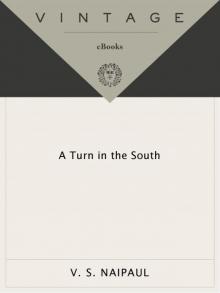 A Turn in the South
A Turn in the South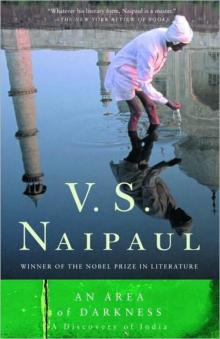 An Area of Darkness
An Area of Darkness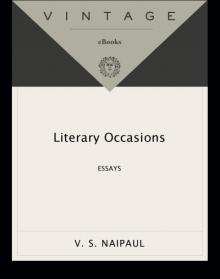 Literary Occasions: Essays
Literary Occasions: Essays A Way in the World
A Way in the World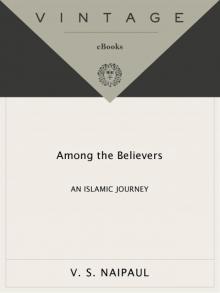 Among the Believers: An Islamic Journey
Among the Believers: An Islamic Journey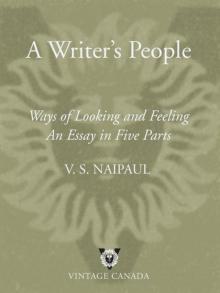 A Writer's People: Ways of Looking and Feeling
A Writer's People: Ways of Looking and Feeling The Mimic Men: A Novel
The Mimic Men: A Novel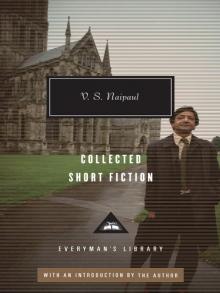 Collected Short Fiction
Collected Short Fiction India: A Million Mutinies Now
India: A Million Mutinies Now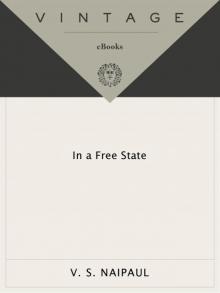 In a Free State
In a Free State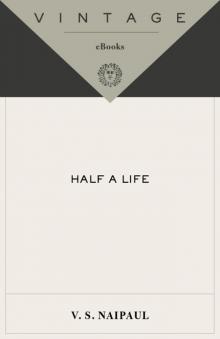 Half a Life
Half a Life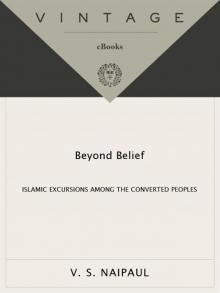 Beyond Belief: Islamic Excursions Among the Converted Peoples
Beyond Belief: Islamic Excursions Among the Converted Peoples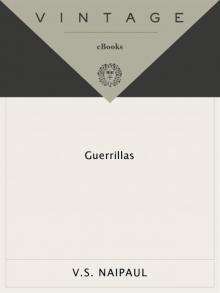 Guerrillas
Guerrillas A House for Mr. Biswas
A House for Mr. Biswas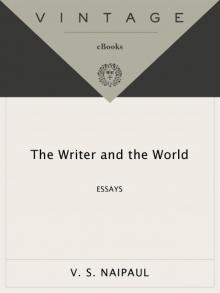 The Writer and the World: Essays
The Writer and the World: Essays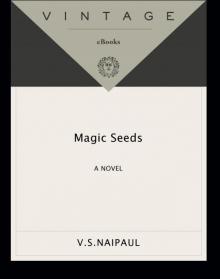 Magic Seeds
Magic Seeds The Mystic Masseur
The Mystic Masseur Miguel Street
Miguel Street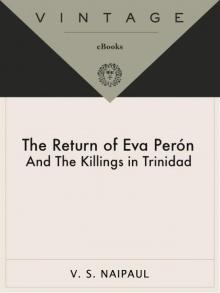 The Return of Eva Perón, With the Killings in Trinidad
The Return of Eva Perón, With the Killings in Trinidad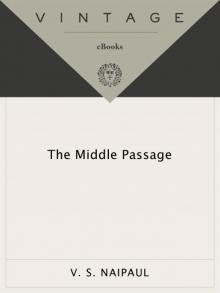 The Middle Passage
The Middle Passage A Bend in the River
A Bend in the River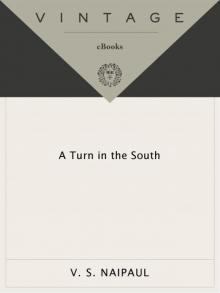 A Turn in the South (Vintage International)
A Turn in the South (Vintage International)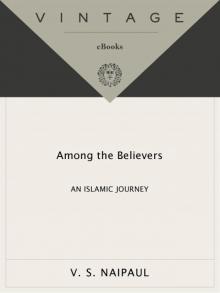 Among the Believers
Among the Believers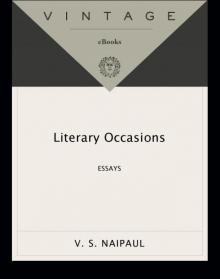 Literary Occasions
Literary Occasions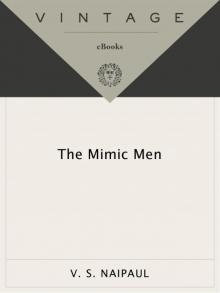 The Mimic Men
The Mimic Men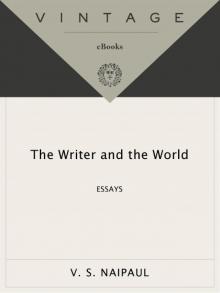 The Writer and the World
The Writer and the World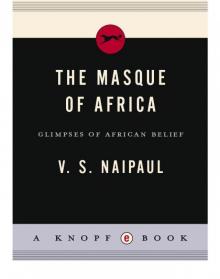 The Masque of Africa
The Masque of Africa